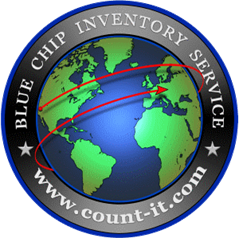
It's 2023 and the future of the supply chain is far from certain. With multiple geopolitical conflicts and economic pressures, inflationary trends, climate change weather events increasing in intensity, and the potential for new disruptions emerging, supply chain operations are set to remain volatile.
This means that companies must be prepared to respond quickly to new and existing disruptions. Supply chain managers must be prepared to anticipate and mitigate risks due to port holdups, reduced container availability, ocean freight shortages, or price surges. Companies looking to remain competitive must be ready to shift their supply chains to remain flexible and adaptive.
While the future of the supply chain is uncertain, companies can take steps to prepare for potential disruptions. Here are some predictions for what the supply chain may look like in 2023:
1. Increased Automation and Use of Technology
Investing in a cloud-based digital transformation strategy will be even more important in 2023. Automation of warehouse and operational tasks, increased use of AI and machine learning in supply chain planning, and improved customer engagement will be critical to managing risk and competing in an increasingly volatile market.
Supporting this trend is a move towards holistic supply chain platforms. These platforms are designed to provide an all-in-one, seamless user experience for users, bringing together all the supply chain capabilities into one platform.
2. Morphing Retail and Distribution Supply Chains
Compared to earlier COVID-19 times, there may be more consumption mechanisms and channels available for retailers, distributors, and manufacturers in 2023. This will require companies to rethink their supply chains and adapt them to changes in the market.
For example, manufacturers will need to consider the impact that 3D printing technologies such as Additive Manufacturing may have on their supply chain and production processes. Meanwhile, retailers must anticipate changes in consumer demands and preferences. They must respond quickly to changing trends and be prepared to shift their supply chains to ensure they are meeting customer expectations.
3. Increased Focus On Sustainability
Sustainability will be an increasing concern in 2023. Companies will need to focus on reducing the environmental impact of their operations, from products and packaging to energy usage and waste.
Companies will also need to employ sustainable practices in the supply chain, such as reducing the use of single-use plastics and packaging.
4. Greater Emphasis On Last Mile Delivery
Last-mile delivery will be of even greater importance in 2023. The need to move goods quickly and reliably from the factory to the customer will be critical for success. Companies may need to consider alternative delivery models, such as drone delivery or autonomous vehicles, to meet customer expectations.
5. Increased Scrutiny of Scope 3 Emissions Control
In addition to an increased focus on sustainability, regulators and other important stakeholders (such as customers and the finance community) will likely demand a focus on scope 3 emissions control in 2023. It will be important for companies to make informed decisions to reduce these emissions and prove they are taking steps toward sustainability. Many investors will likely shift their focus toward organizations that can demonstrate these efforts.
2023 is set to bring new challenges and opportunities for supply chain managers. Companies looking to remain competitive must be prepared for rapid changes and disruption; invest in new technologies, and prioritize sustainability. By keeping these predictions in mind, companies can ensure their supply chain is ready for the future.
Photo by Jaxon Matthew Willis: https://www.pexels.com/photo/drone-shot-of-a-cargo-ship-in-the-harbor-12485580/


This calculator can help you determine the selling price for your products to achieve a desired profit margin. Try It Free >
Our Audit/Verification Service is available globally - from Thousand Oaks, CA to Timbuktu. Learn More >
Don't just take our word for it. Find out what our clients are saying about our services.
See actual testimonials >
From Retail and Gross Margin Inventory reports, to SKU and Price Verification reports, Blue Chip Inventory provides complete inventory service. See samples >






